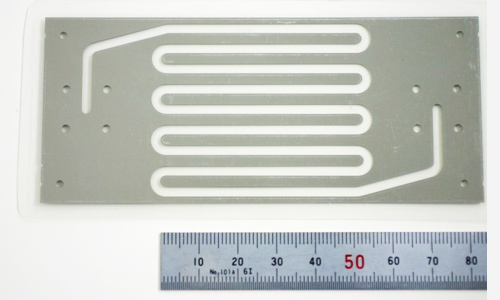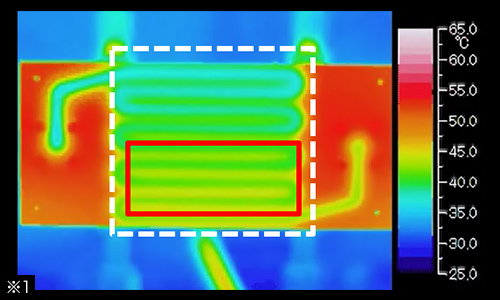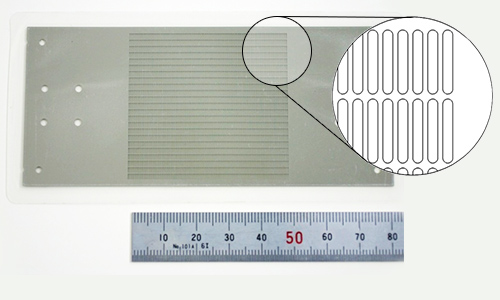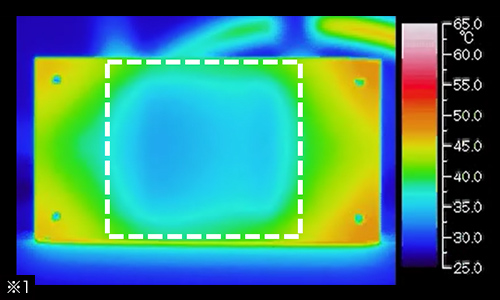Core
About the prototype
WELCON provides customers with "Thermal One-stop" services.
We provide support from prototype development to mass production.
Example of Microchannel Heat Sink Development
In a typical heat sink, the flow path from the inlet to the outlet is a single line. In this case, temperature variations occur at the inlet side where cold refrigerant is supplied and at the outlet side where heat is supplied from the heat source.


With a heat sink with one flow path (inside the white frame, cooling range 40 x 40 mm), you can see that the temperature increases from the upper left entrance to the lower right exit (inside the red frame).
* Conditions
* Device initial temperature: 61 ℃
* Cooling water flow rate: 0.3L / min Cooling water temperature: 31 ℃
(about 1 second after running water)
In order to efficiently remove heat from the heat generation source and suppress the temperature rise, it is necessary to cool uniformly without temperature variation.
The heat sink provided by WELCON as a standard product can cool uniformly without temperature variation.
It features a "matrix flow path" in which fine chambers such as liquid crystals are mounted in microchannels so that fresh refrigerant is evenly distributed.
Heat sink with a matrix channel structure cools the cooling surface (inside the white frame) evenly.


* Conditions
* Device initial temperature: 61 ℃
* Cooling water flow rate: 0.3L / min Cooling water temperature: 31 ℃
(about 1 second after running water)
Let's try prototype development with WELCON.
There are two patterns of prototype development
① Customization of a standard product:
Based on a standard product, we customize it to meet the shape, performance, specification conditions, and operating environment required by the customer.
② Prototyping from scratch:
In special cases, we develop prototypes from scratch.
In most cases, ② requires more time and money than ①. We propose a prototype development policy that takes into account the balance of performance, delivery time, and budget desired by the customer.
